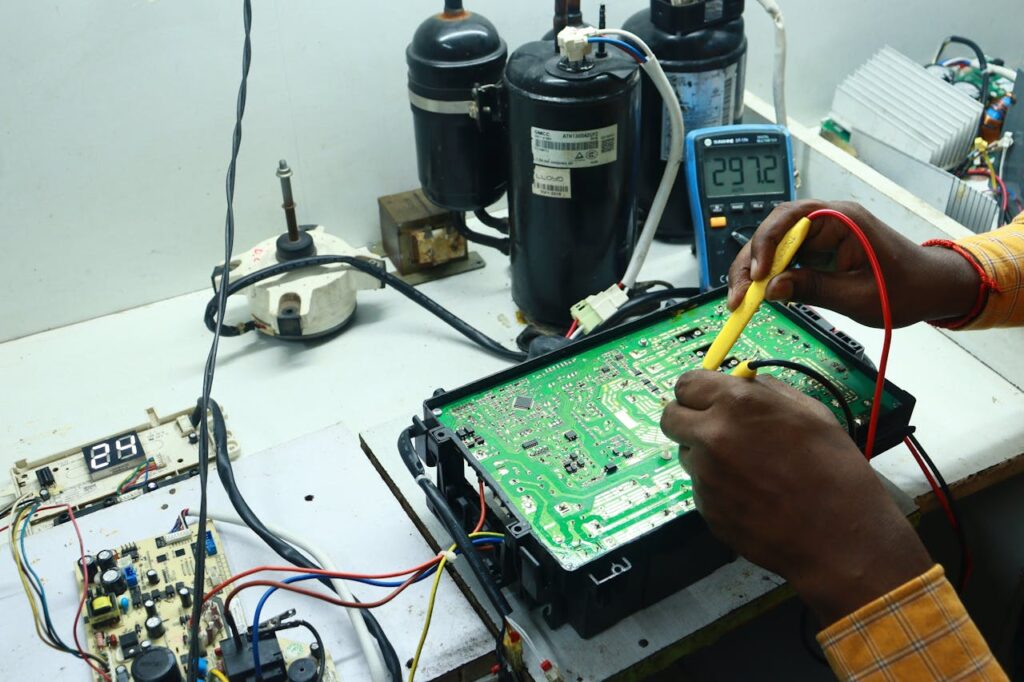Table of Contents
- Introduction
- Why Regular Maintenance Matters
- Understanding E-Bike Components and Their Lifespan
- Daily and Weekly Maintenance Checklist
- Monthly and Seasonal Care Routine
- Battery Care and Charging Best Practices
- Tire and Brake Maintenance
- Cleaning and Storage Tips for Singapore’s Weather
- Common Issues and How to Fix Them Early
- Professional Servicing and When to Replace Parts
- Conclusion
1. Introduction
Owning an e-bike in Singapore is both convenient and cost-effective, especially for short daily commutes. However, with constant exposure to heat, rain, and humidity, proper maintenance is crucial to ensure your e-bike runs efficiently and lasts for years.
Whether you’re a daily commuter or a casual weekend rider, maintaining your e-bike properly not only prevents costly repairs but also enhances performance, range, and safety. This guide covers essential maintenance tips every e-bike owner should know to keep their ride in top condition.

2. Why Regular Maintenance Matters
E-bikes are a combination of mechanical and electrical components — and both need regular care. Neglecting small maintenance tasks can lead to:
- Reduced battery performance and lifespan
- Worn-out brakes and unsafe riding
- Shorter motor lifespan due to dirt buildup or overheating
- Costly repairs or replacement parts
Routine maintenance can extend your e-bike’s life by several years and keep your rides smooth, quiet, and efficient.
3. Understanding E-Bike Components and Their Lifespan
Knowing the key components and how long they typically last helps you plan for replacements in advance.
| Component | Average Lifespan | Notes |
|---|---|---|
| Battery | 2–4 years | Lifespan depends on charging habits and storage |
| Motor | 5–10 years | Minimal wear if kept clean and dry |
| Tires | 2,000–4,000 km | Replace if tread is worn |
| Brake pads | 1,000–2,000 km | Depends on terrain and riding style |
| Chain and gears | 2,000–3,000 km | Regular lubrication extends lifespan |
By understanding these timelines, you can prevent breakdowns and ensure consistent performance.
4. Daily and Weekly Maintenance Checklist
Daily Before Riding:
- Check tire pressure — underinflated tires affect range and handling.
- Ensure brakes work smoothly and don’t squeak.
- Confirm battery is charged and properly mounted.
- Test lights and horn/bell for safety.
Weekly Checks:
- Wipe down your e-bike to remove dust and moisture.
- Inspect chain tension and apply lubricant if it looks dry.
- Ensure the display, throttle, and power assist respond correctly.
Regular small checks can prevent big problems down the road.
5. Monthly and Seasonal Care Routine
Monthly Tasks:
- Inspect all bolts and screws — tighten any that have loosened.
- Check brake pad thickness and replace if worn down.
- Clean the drivetrain (chain, cassette, and derailleur) to prevent rust.
- Review tire condition for cracks or uneven wear.
Every 3–6 Months:
- Perform a complete cleaning and deep lubrication.
- Have the electrical connections checked by a technician.
- Update firmware if your e-bike has a digital display or smart controller.
These periodic checks ensure your e-bike runs smoothly and remains energy-efficient.
6. Battery Care and Charging Best Practices
The battery is the heart of your e-bike — and often the most expensive component to replace. Proper care can significantly extend its lifespan.
Charging Tips:
- Avoid full discharges: Recharge when battery drops to 30–40%.
- Unplug after full charge: Prevent overcharging to reduce heat stress.
- Use the original charger: Using third-party chargers can damage cells.
- Store at 50–70% charge if not riding for more than a week.
Storage Conditions:
- Keep battery away from direct sunlight and moisture.
- Ideal temperature: 20–25°C.
- Avoid charging right after a long ride — let it cool down first.
With good care, your e-bike battery can easily last over 700–1,000 charge cycles.
7. Tire and Brake Maintenance
Tire Care:
- Maintain pressure within manufacturer’s recommended range.
- Inspect for punctures or embedded debris after every ride.
- Replace worn-out tires — smooth tires reduce traction on wet roads.
Brake Care:
- Keep brake pads clean and free of oil.
- Replace if the grooves are no longer visible.
- For disc brakes, ensure rotors are not warped or noisy.
In Singapore’s rainy conditions, brakes wear faster — check them more often during the wet season.
8. Cleaning and Storage Tips for Singapore’s Weather
Singapore’s tropical climate brings frequent rain and humidity, both of which can affect your e-bike’s longevity.
Cleaning Tips:
- Use a damp cloth and mild detergent — avoid high-pressure water sprays.
- Never spray water directly on the motor, battery, or display.
- Dry thoroughly with a microfiber cloth after cleaning.
Storage Advice:
- Park in a shaded, sheltered area to protect from rain and sun.
- If possible, remove the battery when storing for long periods.
- Consider using a bike cover to prevent rust and dust buildup.
Regular cleaning not only keeps your e-bike looking new but also prevents electrical issues caused by corrosion.
9. Common Issues and How to Fix Them Early
Even with good maintenance, some issues may occur over time. Catching them early can save you from major repairs.
| Symptom | Possible Cause | Quick Fix |
|---|---|---|
| Reduced range | Low tire pressure or old battery | Inflate tires, recalibrate or replace battery |
| No motor power | Loose connection or faulty switch | Check battery terminals and wiring |
| Squeaky brakes | Dirt or worn pads | Clean rotors or replace pads |
| Unstable ride | Loose bolts or misaligned tires | Tighten screws, adjust wheel alignment |
Addressing small issues immediately keeps your rides smooth and prevents breakdowns during commutes.
10. Professional Servicing and When to Replace Parts
While regular DIY maintenance covers most needs, a professional service check is recommended every 6–12 months, especially if you ride daily.
What Technicians Usually Check:
- Electrical wiring and battery diagnostics
- Motor performance and controller health
- Gear shifting and drivetrain condition
- Brake calibration and safety inspection
When to Replace:
- Battery no longer holds charge beyond 60%
- Chain shows visible rust or stretching
- Tires have bald spots or cracks
- Brakes feel spongy even after adjustment
A professional tune-up can detect underlying issues early, ensuring your e-bike remains reliable for years.
11. Conclusion
Proper maintenance is the key to getting the most out of your e-bike investment. In Singapore’s fast-paced and humid environment, consistent care ensures your bike stays efficient, safe, and long-lasting.
By following simple routines — checking tires, maintaining brakes, caring for the battery, and keeping your bike clean — you can enjoy smooth rides every day without unexpected breakdowns.
Ultimately, maintaining your e-bike is not just about saving money; it’s about safety, reliability, and sustainability. With a little regular attention, your e-bike can easily serve you well for many years, making it one of the most rewarding commuting choices in Singapore.
